12 German Watch Brands That Define Excellence
There’s a place where time isn’t simply measured—it’s shaped by hand, coaxed into motion with quiet precision. In Germany, watchmaking is less about luxury and more about legacy, born in the misty hills of Saxony and the industrious heart of Pforzheim. Here, tradition runs deep through generations of craftsmen who carve, polish, and assemble not for spectacle but for permanence. This is a country where time is honored with patience, and pride is built into every gear and bridge.
What sets German watchmaking apart is its restrained brilliance. From the snow-lined rooftops of Glashütte to the workshops tucked in the Black Forest, watches are created with the kind of discipline that favors substance over show. There’s beauty here, but it’s the quiet kind—found in hand-engraved details, in the structure of three-quarter plates, in the steadiness of engineering built to endure. In a world chasing novelty, Germany offers something rarer: timepieces that earn their place not by shouting, but by lasting.
These 12 German Watch Brands Set the Bar for Excellence:
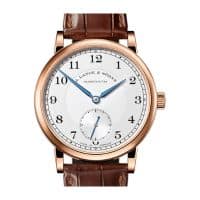 1. A. Lange & Söhne
1. A. Lange & Söhne
A. Lange & Söhne is not just Germany’s most prestigious watchmaker—it’s a symbol of national revival and quiet excellence. Founded in 1845 in the town of Glashütte by Ferdinand Adolph Lange, the brand introduced precision engineering to a poor mining village, helping transform it into the cradle of German horology. Lange’s early pocket watches set the standard with features like the now-iconic three-quarter plate and screwed gold chatons. Though shuttered under Soviet occupation after WWII, the name was resurrected by Walter Lange—Ferdinand’s great-grandson—after reunification in 1990. With support from industry veterans, the brand reemerged in 1994 with the Lange 1, a watch that became an instant classic. Today, A. Lange & Söhne is revered for its in-house calibers, painstaking hand-finishing, and commitment to making watches not for trends, but for legacy.
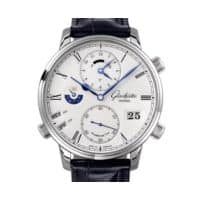 2. Glashütte Original
2. Glashütte Original
To understand Glashütte Original is to trace the survival of German watchmaking through war, division, and reinvention. After WWII, the East German government consolidated regional brands into a state-run conglomerate called GUB (Glashütter Uhrenbetriebe). It was under this system that East German watchmakers preserved and advanced their skills behind the Iron Curtain, often under limited resources. When the Berlin Wall fell, GUB was privatized, and in 1994, Glashütte Original emerged with a mission to uphold traditional Saxon craftsmanship while modernizing for a global audience. The brand manufactures everything in-house—including dials and cases—something only a handful of companies worldwide can claim. Its watches are quietly luxurious: mechanical marvels that blend old-world detailing with modern robustness, standing as a testament to both resilience and refinement.
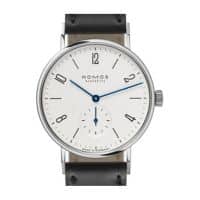 3. Nomos Glashütte
3. Nomos Glashütte
Nomos is the young rebel with an old soul. Founded in 1990, just two months after the fall of the Berlin Wall, Nomos Glashütte injected a fresh, design-led perspective into a town known for mechanical tradition. Guided by Bauhaus and Werkbund principles, Nomos favored simplicity, geometry, and proportion—values that made its early models like the Tangente and Orion instant design darlings. But behind the minimalist dials lies serious horological credibility: the company now produces a full range of in-house movements, including the ultra-thin DUW calibers and its proprietary swing system. More than any other brand, Nomos bridges the gap between architecture and mechanics, intellect and emotion. It isn’t trying to impress—it’s trying to endure, with elegance and integrity.
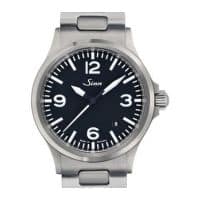 4. Sinn Spezialuhren
4. Sinn Spezialuhren
Founded in 1961 by Helmut Sinn, a former Luftwaffe pilot turned entrepreneur, Sinn was born out of a pilot’s frustration with fragile, impractical instruments. He set out to build watches that could survive the cockpit—and he succeeded. The early focus on chronographs and navigation clocks soon expanded into tool watches built to withstand extreme heat, pressure, magnetism, and impact. Under the leadership of Lothar Schmidt since 1994, Sinn has evolved into one of the most technically advanced watchmakers in the world. Whether it’s the oil-filled UX dive watch, the Ar-Dehumidifying capsules, or Tegimented scratch-resistant steel, Sinn quietly engineers innovations that work. It doesn’t play in the luxury sandbox; it builds instruments for those who rely on time as a matter of function—not fashion.
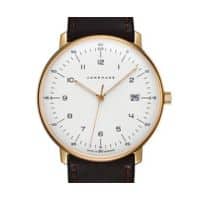 5. Junghans
5. Junghans
Junghans is the grandfather of German timekeeping—stoic, storied, and quietly innovative. Founded in 1861 in Schramberg, in the Black Forest, it quickly grew into one of the largest clock and watch manufacturers in the world by the early 20th century. Junghans has always been a company of quiet revolutions: it produced its first wristwatch in 1927, created Germany’s first quartz watch in the 1970s, and led the way in radio-controlled timekeeping. But it was in the 1950s, when Bauhaus-trained designer Max Bill was brought in, that Junghans created its most enduring legacy—minimalist watches that remain icons of form-following-function. Today, Junghans walks a rare line: it honors industrial efficiency without sacrificing soul, and its designs manage to feel both vintage and eternal.
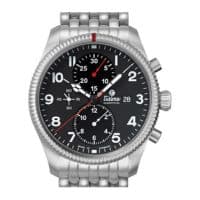 6. Tutima
6. Tutima
Tutima’s story is one of resilience shaped by history and war. Originally founded in 1927 in Glashütte, the company made high-grade wrist chronographs for the Luftwaffe during WWII. But the end of the war saw its facilities destroyed and the brand scattered. Rather than vanish, Tutima regrouped in West Germany, eventually settling in Ganderkesee, where it continued to produce robust mechanical chronographs. In a poetic full-circle moment, Tutima returned to Glashütte in 2008, reclaiming its roots and re-establishing itself as a true manufacture. Its watches—especially the military-inspired M2 and the refined Patria series—are built with the grit of their history and the clarity of their purpose. Tutima doesn’t chase attention; it earns respect through substance and survival.
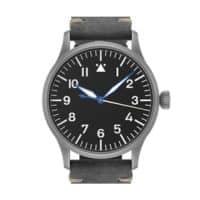 7. Stowa
7. Stowa
There’s something deeply honest about Stowa—no marketing glitz, no celebrity ambassadors, just timeless design and mechanical clarity. Established in 1927 by Walter Storz in Pforzheim, Stowa is best known for being one of the five official suppliers of Flieger watches to the German Luftwaffe during WWII. These aviation watches—highly legible, with sterile dials and oversized crowns—have since become icons. But what’s remarkable is how Stowa evolved. Instead of leaning solely on nostalgia, it revived its mid-century Bauhaus models and introduced modern interpretations of marine chronometers and dress pieces. Under the ownership of Jörg Schauer since the 1990s, Stowa has remained fiercely independent, producing small runs of highly consistent, thoughtfully finished timepieces that speak to collectors who value quiet mastery.
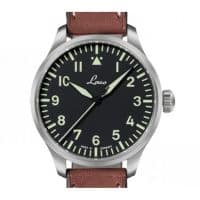 8. Laco
8. Laco
Laco, like Stowa, is rooted in Pforzheim and forever tied to the legacy of the Flieger watch. Established in 1925, it too was among the select few commissioned to produce the oversized B-Uhr observation watches during WWII. These early models were not just historically important—they were vital cockpit instruments, built to exacting military specifications. Today, Laco continues to honor that legacy with faithful recreations that maintain historical accuracy down to the riveted leather straps and anti-magnetic protection. Yet the brand has also pushed forward, creating modern tool watches and contemporary takes on classic aviation themes. Laco’s charm lies in its balance of reverence and relevance—making watches that respect the past while still belonging to the present.
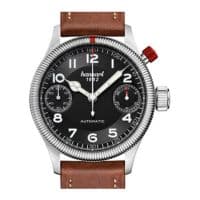 9. Hanhart
9. Hanhart
Hanhart is a brand forged in the cockpit and sharpened by the ticking demands of precision timing. Founded in 1882 in Diessenhofen, Switzerland, but soon relocated to Germany’s Black Forest region, Hanhart became one of the most important suppliers of chronographs to the German military during the 1930s and ’40s. Its most iconic contribution was the single-pusher flyback chronograph with its signature red reset pusher—a design detail born, legend says, to prevent pilots from accidentally resetting mid-mission. Unlike many of its wartime peers, Hanhart never faded into obscurity. Today, it continues to build rugged, vintage-inspired chronographs that echo its past without being imprisoned by it. Hanhart watches carry a sense of mission—precise, utilitarian, and always prepared for action.
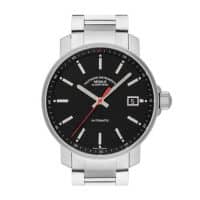 10. Mühle-Glashütte
10. Mühle-Glashütte
Mühle-Glashütte is one of the few German brands that has stayed in family hands through war, division, and reunification—an unbroken line of horological continuity. Founded in 1869 by Robert Mühle, the company originally produced precision measuring instruments for watchmakers and schools in Glashütte. It wasn’t until the 1990s that the modern brand, under the leadership of Hans-Jürgen Mühle, pivoted toward wristwatches. Today, Mühle-Glashütte is known for its maritime instruments and robust professional watches—clear, legible, and made to endure. Whether it’s a rescue diver’s tool or a shipboard chronometer, the focus remains squarely on function. Their patented woodpecker neck regulation and in-house modules add mechanical substance to the brand’s workmanlike elegance.
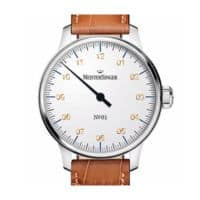 11. MeisterSinger
11. MeisterSinger
MeisterSinger challenges our relationship with time by doing something quietly radical: it removes the minute hand. Founded in 2001 by Manfred Brassler, the Münster-based brand reimagines the modern watch as a return to slower living. Inspired by early tower clocks and pocket watches, MeisterSinger’s single-hand display encourages a more relaxed reading of time—down to the nearest five-minute mark. Yet behind this poetic concept lies serious watchmaking: carefully executed cases, award-winning dial typography, and increasingly complex in-house movements like the MSH01 with a 120-hour power reserve. MeisterSinger isn’t about urgency—it’s about presence. In a world of notifications and split seconds, it invites us to breathe.
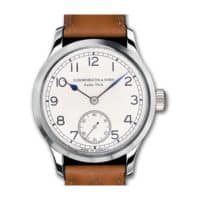 12. D. Dornblüth & Sohn
12. D. Dornblüth & Sohn
Few brands feel as personal—or as painstaking—as D. Dornblüth & Sohn. Born out of a conversation between master watchmaker Dirk Dornblüth and his father in 1999, this Kalbe-based workshop builds each watch by hand in small quantities, often finishing and modifying every movement piece by piece. The brand’s signature aesthetic draws from early 20th-century German marine chronometers—large subdials, heat-blued hands, and solid German silver plates. Dornblüth modifies Unitas and ETA ébauches so extensively that the final product feels like a movement entirely of its own. There’s no flash here—just warmth, weight, and soul. These are watches for purists: the kind of pieces that whisper craftsmanship and radiate permanence.
Plus 8 More German Watch Brands You Shouldn’t Overlook:
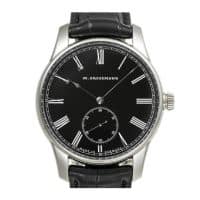 13. Moritz Grossmann
13. Moritz Grossmann
Moritz Grossmann represents the pinnacle of modern Saxon watchmaking—quietly competing at the highest levels of artisanal craftsmanship. Originally founded in 1854 by the eponymous watchmaker, Grossmann was a central figure in the development of Glashütte as a horological hub, even helping to establish the town’s first watchmaking school. The modern revival came in 2008, spearheaded by Christine Hutter, who brought Grossmann’s vision back to life with reverence and ambition. Every watch is built entirely in-house in Glashütte, with breathtaking movement finishing, hand-shaped hands, and clever mechanics like a unique pusher-winding system. With extremely limited production, Moritz Grossmann isn’t about marketing—it’s about mastery, aimed squarely at collectors who appreciate handmade detail on a level rarely seen.
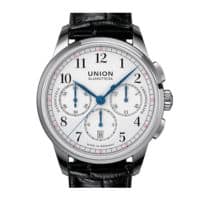 14. Union Glashütte
14. Union Glashütte
Union Glashütte bridges accessibility and tradition with an elegant restraint rooted in Saxon heritage. First established in 1893, the original brand aimed to produce affordable Glashütte-quality watches for a wider audience. That spirit was revived in the 1990s when Union was re-established under the Swatch Group umbrella. While it shares infrastructure with its bigger sibling Glashütte Original, Union operates as its own brand, offering refined designs and robust German-influenced calibers at a more attainable price point. Its models—like the Belisar and Noramis—combine historical aesthetics with contemporary performance, delivering everyday luxury without excess. Union is proof that German craftsmanship doesn’t need to shout to make a lasting impression.
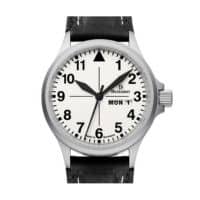 15. Damasko
15. Damasko
Damasko is Germany’s best-kept secret in the world of hardcore tool watches. Founded in 1994 by Konrad Damasko, a materials engineer with a passion for precision, the company brings aerospace-grade innovation into wristwatch form. Based in Bavaria, Damasko developed proprietary case hardening techniques that make their watches nearly scratchproof—four times harder than standard stainless steel. Their anti-magnetic movements, oil-free escapements, and in-house calibers reflect an obsession with durability and reliability. Unlike most brands, Damasko isn’t trying to evoke nostalgia—it’s building the future of mechanical toughness. If Sinn is the rugged classic, Damasko is the stealth genius operating just under the radar.
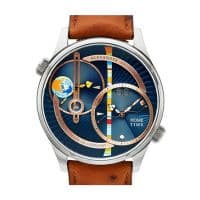 16. Alexander Shorokhoff
16. Alexander Shorokhoff
Alexander Shorokhoff is the artistic outlier in Germany’s otherwise understated watch scene. Founded in 2003 by Russian-born Alexander Shorokhoff and based in Alzenau, the brand fuses bold, avant-garde design with solid German watchmaking. Inspired by classical composers, Russian constructivism, and surrealist art, the watches feature oversized numerals, vivid colors, engraved dials, and limited-edition flourishes that feel more like wearable art than conventional timepieces. While many of the movements are modified Swiss or vintage-based, the real statement is in the visual language—a daring contrast to the rigidity of traditional German aesthetics. Shorokhoff doesn’t follow the rules; it composes its own.
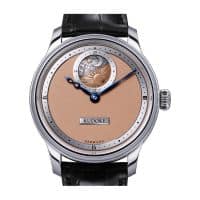 17. Kudoke
17. Kudoke
Kudoke is the kind of brand that feels discovered, not marketed—an artisan’s whisper in a noisy world. Founded by Stefan Kudoke, a master engraver and independent watchmaker trained in both Glashütte and Switzerland, the brand produces hand-finished timepieces in tiny numbers. While early models showcased elaborate skeletonization and baroque detailing, Kudoke found its voice with the Handwerk series, particularly the poetic Kudoke 2, which features a hand-engraved day/night disk and minimalist layout inspired by historical astronomical clocks. With in-house movements co-developed with Habring² and finishing that rivals much larger maisons, Kudoke proves that German craftsmanship can also be mystical, metaphysical, and deeply personal.
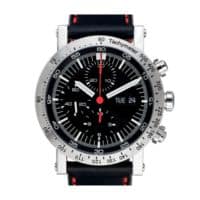 18. Temption
18. Temption
Temption is a design purist’s dream—clean, balanced, and quietly radical. Founded in Stuttgart by Klaus Ulbrich in the late 1990s, the brand draws from Bauhaus and Zen philosophy, creating watches that emphasize symmetry, contrast, and legibility above all. The result is a range of watches that eschew ornamentation in favor of stark beauty—models like the CM03 and CGK205 are often praised by collectors for their industrial elegance and tool-grade build quality. While production remains small, the attention to detail is immense: flush-fit sapphire crystals, recessed crowns, and dials that align with golden ratio proportions. Temption may not be widely known, but for those who discover it, it feels like a well-kept secret.
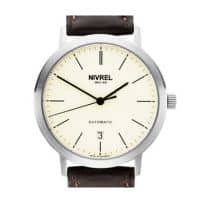 19. Nivrel
19. Nivrel
Nivrel operates in a space few brands dare to occupy: where German design meets Swiss mechanics in watches that balance classical refinement with contemporary charm. Originally founded in Switzerland in 1936, Nivrel was revitalized in the 1990s by the husband-and-wife team Gerd and Gitta Müller, who relocated the brand to Saarbrücken, Germany. Nivrel’s collections span from elegant time-only dress watches to complicated pieces with moonphases, chronographs, and tourbillons—often using heavily decorated ETA or Unitas movements. Though not a manufacture, Nivrel brings a bespoke, boutique sensibility to everything it creates. It’s a brand for connoisseurs who appreciate heritage, craftsmanship, and a touch of old-world romance.
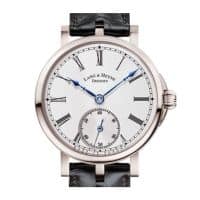 20. Lang & Heyne
20. Lang & Heyne
If A. Lange & Söhne is the grand cathedral of German watchmaking, Lang & Heyne is the chapel—intimate, reverent, and serenely beautiful. Based in Dresden and founded by Marco Lang in 2001, the brand is devoted to the most traditional forms of watchmaking: hand-finished bridges, triple-lugged cases, frosted three-quarter plates, and signature details like the hand-carved balance cocks. Everything is crafted in-house in extremely small numbers, with the kind of artisanal polish that belongs in horological museums. Each model—named after Saxon kings—embodies a regal restraint. Lang & Heyne is not about innovation for its own sake; it’s about preserving the spirit of 18th-century craftsmanship in a 21st-century wristwatch.

